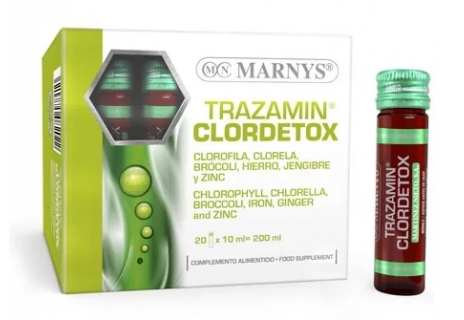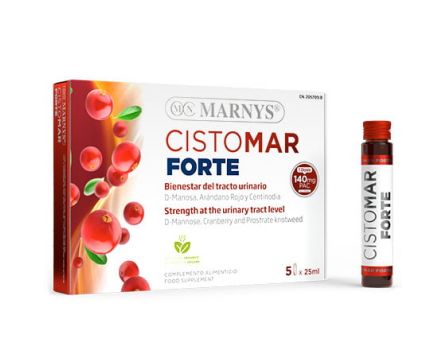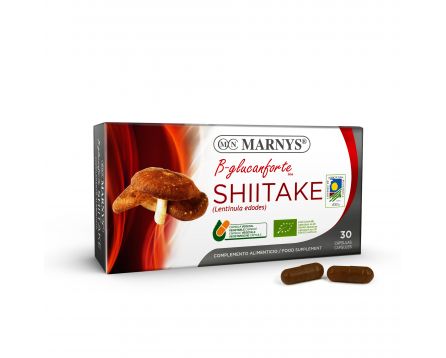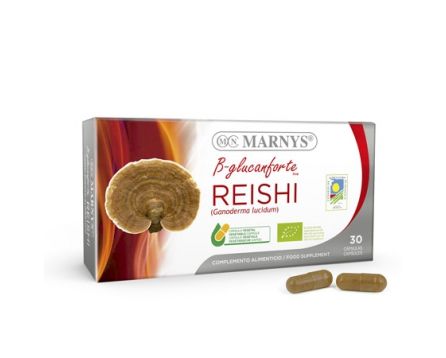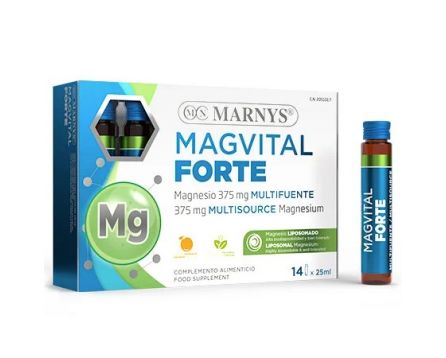MARNYS Trazamin Clordetox 20x10ml vials
| Original price | 380 Kč |
| Your purchase price |
You save
31 Kč
349 Kč
(312 Kč bez DPH)
|
Microalgae. A bonus for your body Do you know the power of microalgae? With Chlorophyll, Chlorella, Broccoli, Iron, Ginger and Zinc.
MARNYS® Trazamin Clordetox is a formulation that combines the seaweed Chlorella, Chlorophyll (from Alfalfa and Nettle), Broccoli, Ginger, Iron and Zinc, which provide extra oxygenation and antioxidant effect.MARNYS® Trazamin Clordetox and its exclusive combination of ingredients provides the… more
| Code: | MNV707 |
| EAN: | 8410885082022 |
| Manufacturer: | Marnys Španělsko |
MARNYS® Trazamin Clordetox is a formulation that combines the seaweed Chlorella, Chlorophyll (from Alfalfa and Nettle), Broccoli, Ginger, Iron and Zinc, which provide extra oxygenation and antioxidant effect.
MARNYS® Trazamin Clordetox and its exclusive combination of ingredients provides the following properties:
The green seaweed Chorella vulgaris contributes to body detoxification and to maintenance of intestinal function (EFSA ON HOLD 3314).
The Chlorella in MARNYS® Trazamin Clordetox undergoes a mechanical procedure during its processing, what guarantees breaking the cell wall and obtaining the algae's active ingredients. Moreover, Chlorella guarantees a minimum protein and chlorophyll content of 50% and 2% respectively.
The Chlorophyll in MARNYS® Trazamin Clordetox guarantees a minimum chlorophyll content of 2-2.4%, and contributes to normal production of haemoglobin (EFSA ON HOLD 1967).
The minerals Iron and Zinc contribute to normal energy-yielding metabolism and to normal metabolism of carbohydrates, fatty acids and macronutrients, respectively (EFSA). Iron contributes to normal formation of red blood cells and haemoglobin, and to oxygen transport, while Zinc contributes to acid-base metabolism and cellular protection from oxidative damage (EFSA).
Ginger (Zingiber officinale) is well known due to its nutraceutical value, which can be attributed to a variety of bioactive phenolic compounds including gingerols, zingiberene and shogaols. Ginger contributes to normal function of the cardiovascular system (EFSA ON HOLD 2171). In MARNYS® Trazamin Clordetox, Ginger guarantees a minimum gingerol and shogaol content of 5%.
Broccoli (Brassica oleracea) is considered the jewel of agricultural botany, is an extraordinary source of glycosides (glucosinolates and isothiocyanates), vitamins (A, C, E K), polyphenols and minerals (especially Selenium). The Broccoli in MARNYS® Trazamin Clordetox has got a 10:1 ratio, that is, 30mg of extract are equivalent to 300mg of Broccoli.
MARNYS® Trazamin Clordetox is ideal for people with a disordered diet, exposed to toxic agents, or people with acid-base imbalances in general terms.
What is Chlorophyll?
The word Chlorophyll comes from the Greek ‘chloros‘ which means ‘green’, and ‘fýlon‘ or ‘leaf’. Chlorophyll is a pigment found in green plants and in some bacteria and algae. It is an essential biomolecule for the development of photosynthesis, which is the process carried out by certain organisms to turn sunlight into energy.
Chlorophyll was discovered in 1817 by the French chemists Pelletier (1788-1842) and Caventou (1795-1877), who managed to isolate it from the leaves of plants.
The structure of the Chlorophyll molecules comprises two parts: a ring of porphyrin containing magnesium, whose function consists in absorbing light, and a hydrophobic chain of phytol, whose function consists in keeping the Chlorophyll integrated into the photosynthetic membrane.
If we wanted to make a simile, this is ‘the botanical haemoglobin‘ as its structure is very similar to that of animal haemoglobin. However, that haemoglobin contains iron rather than magnesium.
How many types of chlorophyll are there?
There are four types of chlorophyll: Chlorophyll A, B, C and D.
Chlorophyll A is found in the centres of activity of plant cells, which are responsible for photochemical reactions during photosynthesis, while Chlorophyll B functions as a receptor antenna for solar energy that is then transferred to Chlorophyll A. They are abundant in plants and green seaweed.
Chlorophyll C is present in brown algae and single-cell algae; and Chlorophyll D is found only in red seaweed and inside a cyanobacterium known as Acaryochloris marina.
What foods are rich in Chlorophyll?
Some foods rich in Chlorophyll are lettuce, cabbage, chard, spinach, lamb’s lettuce, watercress, rocket leaves, parsley, coriander, wheatgrass and the microalgae spirulina and chlorella.
A suggestion to consume it can be a delicious smoothie full of Chlorophyll: in a blender add rocket leaves, coconut water or natural water, wheatgrass, cucumber, green apple, chia seeds, spinach, and honey if you want it sweeter.
What is Chlorella?
Chlorella is a genus of single-celled green algae from the phylum Chlorophyta. It is spherical, measures from 2 to 10μm in diameter, and has got no flagellum. Chlorella contains the photosynthesising green pigments Chlorophyll A and B. Through photosynthesis Chlorella multiplies rapidly, requiring only carbon dioxide, water, sunlight and small amounts of minerals.
The word Chlorella comes from the Greek ‘chloros‘ (green) and from the Latin diminutive suffix ‘-ela’ (little). The German biochemist Otto Heinrich Warburg was awarded the Nobel Prize in Physiology or Medicine in 1931 thanks to his study of photosynthesis in Chlorella.
Its chlorophyll content is up to four times higher than spirulina, spinach and nettle. Green seaweeds are the highest sources of chlorophyll in the botanical world, and of all algae studied so far Chlorella has got the highest percentage, often from 3 to 5% chlorophyll.
Very popular in traditional herbology, this algae has got therapeutic interest linked to its exceptional nutritional composition, as it contains macronutrients and micronutrients, some of which are essential for the body function.
Chlorella can be used to season meals and to dress salads. In Asia, the number of Chorella-based foods is very significant, mainly based on honey, pasta and energy biscuits enriched with Chlorella to increase the nutritional value. Its powder can be used to prepare recipes like Pesto with Chlorella, with basil leaves, garlic cloves, pine nuts, powdered Chlorella, tomato juice, white miso paste coffee, powdered almond, olive oil, salt and pepper.
How to use:
Take 1 vial a day
Ingredients:
Purified water, vegetable glycerin, natural chlorophyll extract powder (Medicago sativa, Urtica dioica), chlorella (Chlorella vulgaris) extract powder, broccoli (Brassica oleracea) extract powder, iron gluconate, ginger rhizome (Zingiber officinale) extract powder, zinc gluconate, maltodextrin and flavour. • Zinc helps protect cells during the oxidative process.
Dosage:
20 x 10ml vials
· Food supplements should not be used as a substitiute for a balanced nutrition.
· It is recommended to keep a varied and balanced diet and healthy lifestyle.
· Do not exceed the recommended daily dose.
· Keep away from children.
· Do not store at a temperatures above 30ºC.

